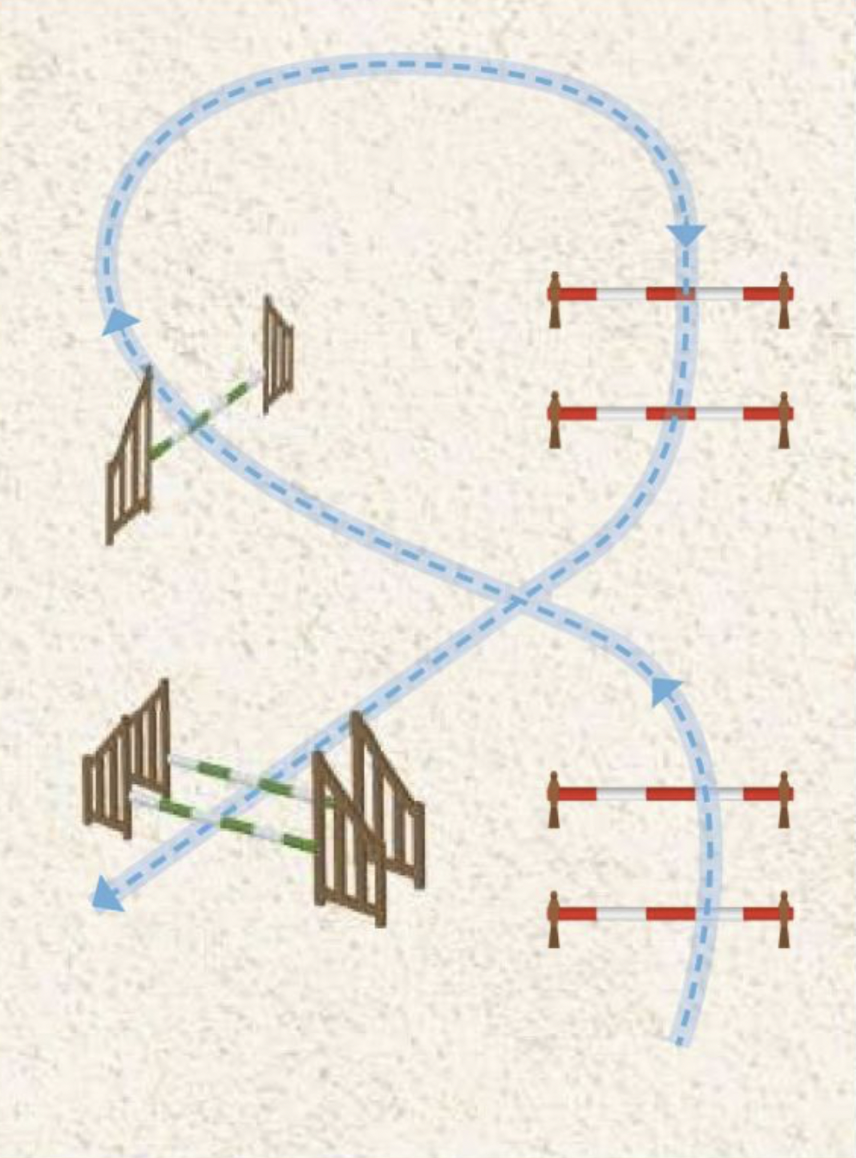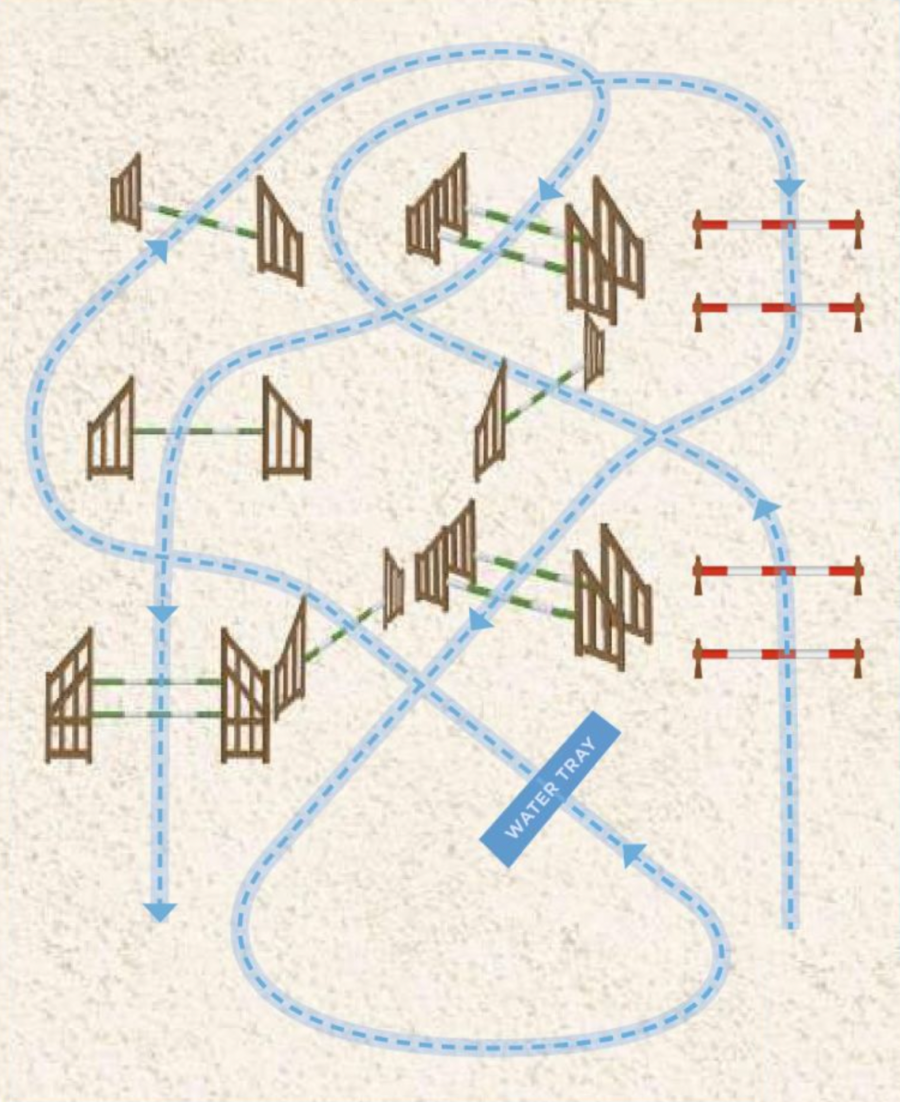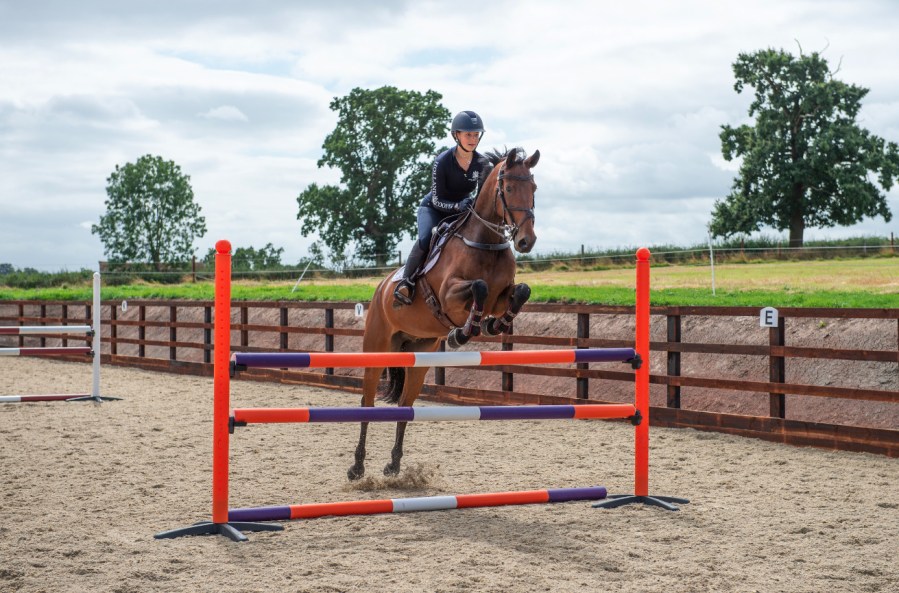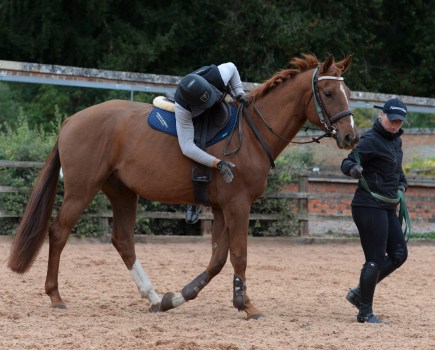Coming up with novel exercises that will engage your horse and prepare them mentally and physically for competition day can be tough. If you’re getting ready for a specific event there are bound to be other things on your mind – not least making sure that everything goes smoothly on the day and combatting pre-competition jitters.
Continued from part one, eventer and trainer Caroline Moore shares how you can prepare for jumping competitions.
“I’d advise doing the full set of exercises as part of your horse’s day-to-day training so that you’re not throwing a whole new regime at them days before a competition,” adds Caroline. “That way there’ll be a familiarity to it, so the next time you perform the exercises they’ll act as a real boost to you and your horse’s confidence.
“Use the last exercise in particular – either on its own, or after performing the full set of exercises – as a pre-competition workout four or five days prior to the event to increase speed and accuracy.”
Exercise 3: Adding in more jumps

Exercise 3
Set it up: This exercise starts with the two pairs of cavaletti on the three-quarter line as per the previous two exercises. You also need two more fences on each diagonal – an upright and an oxer.
Placing fences like this stops you and your horse from relying on the straight edges of the arena to keep you straight over the jumps. If you wish, you can use markers to guide your straight line to the fence when you’re starting out.
“Don’t try too hard and rush; just sit and relax,” advises Caroline.
How to ride it:
- Take up canter, but focus on keeping your horse steady over the first pair of cavaletti.
- Move quietly away and on to the upright.
- Count the rhythm in your head as you approach each obstacle.
- Keep a bouncy canter over the second cavaletti. You don’t want your horse to feel flat. This will also help to prepare them for the oxer.
- You want your horse’s canter to feel the same over the first and second sets of cavaletti. If they feel as though they’ve gotten faster, or lost momentum, correct them before approaching the final oxer.
- Repeat the same course. You can raise the height of the upright and oxer slightly if you want to add to the challenge. You should recognise a more consistent and balanced rhythm to your horse’s paces.
Exercise 4: Pre-competition workout

Exercise 4
This course might look complicated at first glance, but it’s great for practising everything that a showjumping competition might throw at you.
It uses the cavaletti you jumped in the first exercise, then the upright and the oxer, and it then builds on that course bit by bit. You’ve already done the first half, so this part will feel familiar.
“When creating a pre-competition practise course, try to use a mixture of uprights and oxers,” says Caroline.
Feel free to alter the course by adding a skinny if you have space. If you don’t have a water tray try spreading some tarpaulin or old feed bags beneath a jump to create the illusion of one.
How to ride it:
- This course of jumps starts with the cavaletti, upright and oxer used in exercise 3.
- Consider the rhythm of your horse’s canter, and focus on riding quietly rather than anticipating the next obstacle.
- After jumping the oxer, take a wide circle to reach the water tray and upright.
- Think about your route as you approach the next upright. Where do you need to place your horse to approach each jump straight?
- Don’t just look towards the fence, but centre your body and shoulders on it too. Keeping your body on the fence like this creates your own invisible guide rail that will keep you straight.
- For the final line of oxer/ upright/ oxer, check your canter – you should still be in complete control. Make sure that it doesn’t feel as if your horse is rushing into the fence.
Meet the expert: Eventer Caroline Moore has produced and ridden horses up to 5 level, competing at Badminton and Burghley.
Check out our subscription offer









